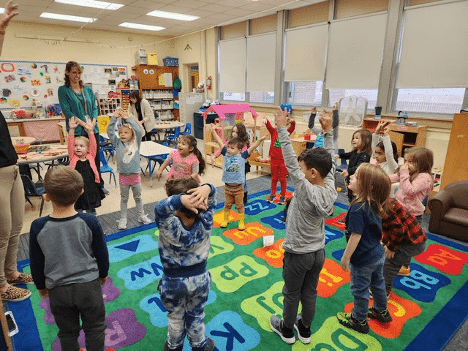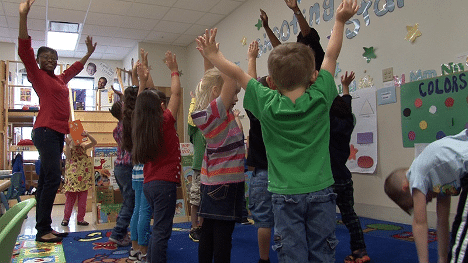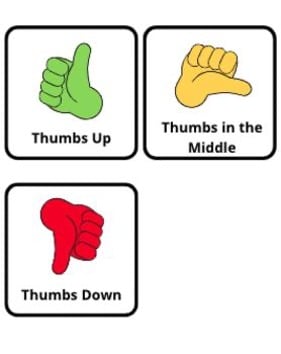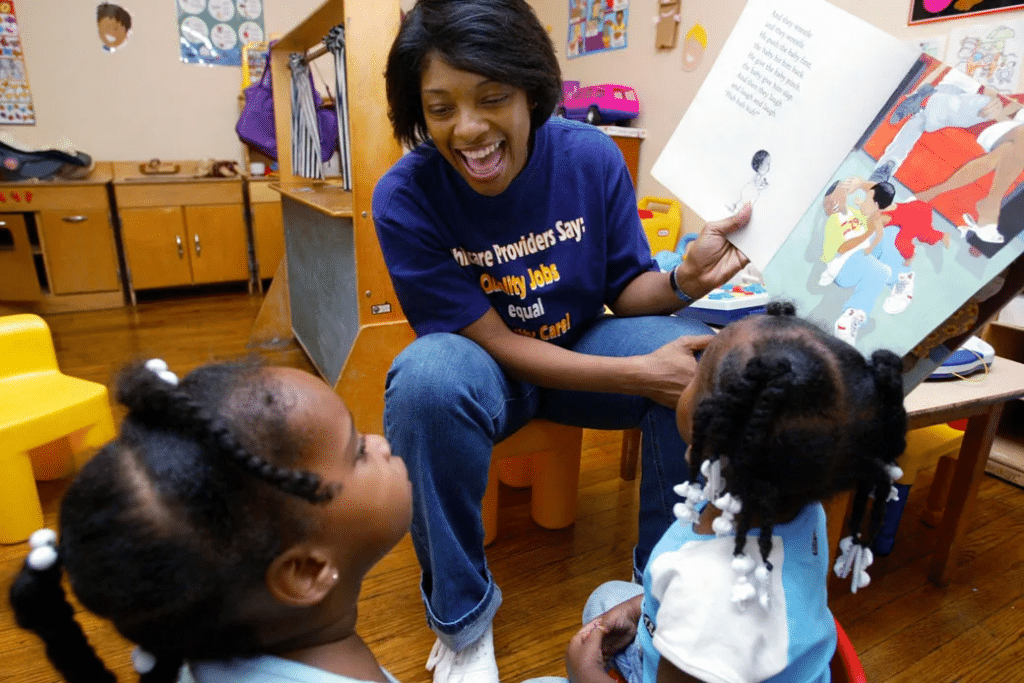When I was in my first year teaching, my elementary principal mom taught me about something called “time on task.” Time on Task is how we protect as many instructional minutes as possible. In our classroom, if we lose just 3 minutes a day that equals 15 minutes a week, 1 hour a month, and 10 hours a year of lost instruction, just by losing 3 minutes a day. First and foremost, we protect this time by dialing in routines and procedures to create a classroom that runs like a well-oiled machine. However, we must also capitalize on engaging all children, as much as possible, in learning activities to take advantage of the most instructional minutes.
Simultaneous engagement in education is an approach that encourages all children to participate in learning activities at the same time, rather than waiting for individual turns. This method helps keep young learners interested and involved, making the most of their natural curiosity and energy. There have been many classrooms I have visited where one child is called up to the board to “show what they know.” For example, a teacher is having children write the letter of the week. So the teacher calls on one child to write the letter on the whiteboard, while everyone sits back and watches, possibly creating an opportunity for misbehavior. Simultaneous engagement in this setting could look like one child writes the letter on the board and everyone else uses their “magic pencil” aka pointer finger, to write the letter in the air. Another common example would be calling on one child to answer a question vs. using partner talk to have all children communicate their answer to someone sitting next to them.
Let’s start with some important basics…
There are two types of directives we can give children during learning experiences.
Overt Commands – Overt Commands are directives which engage children “overtly” meaning shown openly. These commands help a teacher check for understanding after teaching and get observable responses from children. One of the key strategies to use is to begin with the word, “Everyone…”
Overt Commands Sound Like:
Everyone write a letter “s” in the sky
Use your fingers to make a triangle
Point to your elbow
Give me a thumbs up if you agree with what Juan Pablo said
Show me one way to make six
Covert Commands – Covert commands, also known as embedded commands, are phrases or directives that engage children mentally. These directives are used to set expectations for what children will do cognitively.
Covert Commands Sound Like:
While you are waiting, remember the steps for washing your hands.
While I am reading, make a movie in your mind about the story.
As you draw your picture, think about what words you want me to write about your picture.
As you eat breakfast, think about what center you’d like to play in today
Simultaneous Engagement in Large Group
Large Group experiences tend to be the time simultaneous engagement is needed the most. Simultaneous engagement in large group activities in preschool is a critical strategy for fostering active participation, collaboration, and meaningful learning among young children. This approach ensures that all children are actively involved in the learning process rather than passively observing, which aligns with best practices in early childhood education. Research suggests that when children are simultaneously engaged, they are more likely to maintain attention, demonstrate higher levels of curiosity, and develop social and cognitive skills through interaction with peers and teachers (McClelland et al., 2015). Additionally, simultaneous engagement supports differentiated learning by allowing children to engage with activities at their own developmental level, promoting inclusivity and equity within the group. For example, activities such as singing, movement games, or group storytelling allow every child to participate in a way that is meaningful to them, fostering a sense of belonging and confidence (Epstein, 2014). This strategy not only enhances individual learning outcomes but also builds a collaborative classroom culture, preparing children for future academic and social success.
Large Group
Simultaneous Engagement
Strategies
Hand Signals
Use hand signals to get simultaneous responses to selected response questions. For example, students can hold up one finger for the first option in a multi-choice question.
Group Discussions
Have students work in small groups to solve problems or discuss open-ended questions. This allows students to explain their reasoning and problem-solving process.
Shared Book Reading
Read a book aloud and discuss it with the children. This exposes children to written language, print, and content knowledge.
Add Movement
Incorporate movement into activities, such as singing a song that involves movement choices.
Create Well-Designed
spaces & Small Group Activities
Make sure students know where to go and what to do in each area of the classroom.
Use Visuals
Use pictures and visuals to help students understand and participate.
Provide students with another learning opportunity to make learning their own through collaboration and discussion.
Tune into Children’s Interests
Talk about the children’s interests and experiences and/or have them discuss with the classmates on the rug…you may not be interested in Paw Patrol, but by listening and learning that your students are, you’ve both deepened your relationship with them and have another access point to get them more engaged in lessons
As our goal is to consistently create an engaging environment throughout the day, here are some ways to incorporate simultaneous engagement effectively through the day:
1. Group Responses
- Choral Responses: Use choral responses for simple questions or activities, such as having everyone say the letter sounds together or count aloud.
- Echo Games: For language activities, the teacher says a word or phrase, and all children repeat it. This method works well with letter sounds, vocabulary building, and phonics.
2. Interactive Songs and Movement
- Action Songs: Songs that incorporate actions like If “You’re Happy and You Know It” or “Head, Shoulders, Knees, and Toes,” encourage all children to participate physically and vocally.
- Movement Activities: Games like “Simon Says” or “Freeze Dance” allow all children to be engaged simultaneously, which helps them focus on listening and responding as a group.
3. Whole-Group Art and Craft Activities
- Collaborative Art: a large mural or collage where each child adds their part at the same time helps kids work on a shared project, fostering teamwork and inclusion.
- Individual Art with Group Themes: All children can work on their version of an art project based on a common theme, like making different shapes or animals related to a letter or topic.
4. Story Time with Participation
- Acting Out Stories: Choose simple stories where children can act as characters or perform actions related to the story. For example, when reading a story about animals, children can make animal sounds or movements all at once.
- Predictive Storytelling: Pause and ask the group to guess what happens next using the illustrations as a guide, or how a character feels, encouraging everyone to participate.
5. Hands-On Learning Activities
- Sensory Bins and Table Centers: Set up sensory bins or centers with multiple activities so all children can explore together, each working at their own pace. For example, in a letter-learning center, children could use playdough to form letters while others trace letters in a sand tray.
- Manipulatives and Small Objects: Activities like sorting, counting, or creating patterns with blocks or beads can be done by everyone at the same time, each working individually but engaged as a group.
Using simultaneous engagement in early learning not only maximizes learning opportunities but also reduces waiting time and encourages social skills as children learn together. This approach fosters an inclusive and energetic learning environment, which is key for young learners. Try out some of these ideas and share with us on IG @Refine-ed




